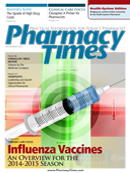Publication
Article
Pharmacy Practice in Focus: Health Systems
The Upside of High Drug Costs
There has been much consternation over the past few years about the rising costs of medications. Examples include the exorbitant costs of newly approved medications for niche disease states, the high prices of biologics that are used by many patients for common disease states, the increased product costs due to supply chain restrictions imposed by manufacturers, and the recently recognized growth in the cost of single-source generics. It is not uncommon to find a treatment course of oral or intravenous therapy to be greater than $100,000 per year.
In response to these rising costs, health systems have attempted to capitalize on the increased revenues that can come from dispensing these medications to outpatients. The hope is that this will lead to enhanced net revenues for these nonprofits, helping to cover other areas that are not adding to the contribution margin of the organization. Historically, hospital pharmacists have focused on the acute care side of the business, but with the current focus on transitional care and prevention of readmissions, hospitals merging to become part of a health system, and the need to become a revenue center and not just a cost center, hospital pharmacies are growing their presence in the ambulatory care setting by either adding retail pharmacies and mail order or by contracting with a retail provider to offer these services.
While most people are concerned with the rising costs of medications, I decided to see if there is a silver lining here for the profession of pharmacy. While I am not advocating for expensive medications, I do believe they can provide opportunities for pharmacists. Here are 3 benefits for the profession that are created by high-cost drugs:
(1) Increased importance of clinical decision support—Pharmacy informatics is a burgeoning area of importance for each hospital pharmacy. Finding people who are trained in and passionate about this discipline is essential to managing expensive medications, because starting a patient on the wrong therapy can be costly. The best way to ensure that the most cost-effective medication is chosen is to have more robust clinical decision support systems in use. The ones utilized currently are rudimentary at best, and without dedicated resources to develop, monitor, and optimize these alerts and triggers, information systems will not be able to take advantage of their impact. As organizations depend on these systems to drive therapy choices in the future, hopefully they can be refined so that pharmacy departments can ensure that all therapy is optimal for the patient.
(2) Increased potential for disruptive innovation—When the preferred option is very costly, the opportunity for innovation is large. Introducing a product that is at least as good, but much less expensive, can shift a market quickly. There becomes less incentive to pay more when the cheaper option is just as good. While there are significant barriers to entry for a new medication, the continued pursuit of less expensive options drives researchers as the burden of disease continues. The opportunity for less expensive providers also is a solution. As the profession seeks provider status, the reputation of pharmacists as medication experts provides great leverage in our quest. Ensuring that all patients are on the most cost-effective therapy can provide significant cost savings to our health care system. This doesn’t mean that no patient should ever be placed on high-cost drugs, but that they should be reserved for the patients who have no better options.
(3) Increased reliance on pharmacists—Since medications comprise an increasing portion of overall hospital costs, the pharmacy department gains importance. Pharmacy directors are held much more accountable for the department’s finances and have to explain any negative budget variance to hospital executives. The ability to reduce the cost of medications without affecting the quality of care is needed now more than ever. Because the directors of pharmacy cannot effect all of this change directly, they have to rely upon their frontline staff to intercede at the point of decision-making. Having welltrained, credentialed pharmacists positioned across the enterprise in a practice model that allows for this engagement will provide a platform to demonstrate the benefit of pharmacists in managing drug expense.
While it will take a lot of hard work and perseverance, the department of pharmacy can add value to the current health care system by improving the utilization of cost-effective medications.
Stephen F. Eckel, PharmD, MHA, BCPS, FASHP, FAPhA, FCCP, is associate director of pharmacy, University of North Carolina Hospitals, and clinical associate professor and director of graduate studies at the University of North Carolina Eshelman School of Pharmacy.







